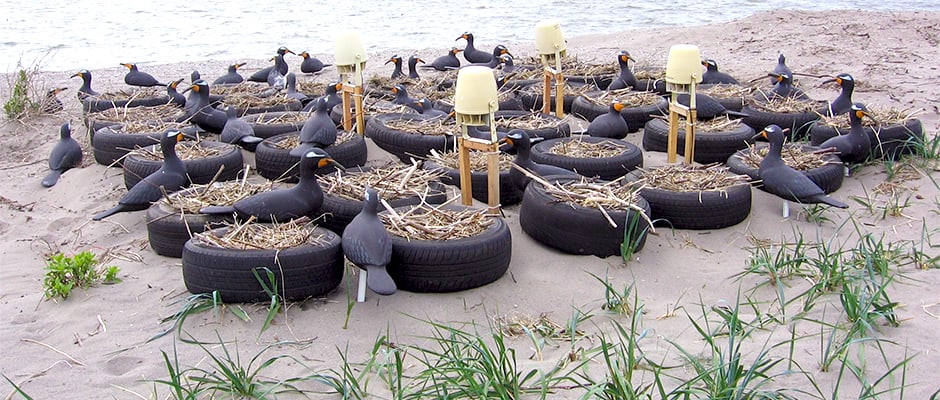Share this article
Social attraction entices cormorants away from fisheries
Wildlife managers battling to keep double-crested cormorants (Phalacrocorax auritus) from devastating juvenile fish populations might want to try something that waterfowl hunters use all the time: decoys.
In a study published in the Wildlife Society Bulletin, researchers tested whether nest areas enhanced with old car and truck tires and filled with decoys would attract the birds — which have been identified as one of the limiting factors of salmonid population recovery — to several locations in the Columbia River Estuary in Oregon away from East Sand Island, a cormorant favorite location.
The team led by Yasuko Suzuki first enhanced the nesting habitat in a few different test locations within the Columbia River estuary by providing nesting material in the tires along with old cormorant nests from previous breeding seasons.
They also deployed cormorant decoys and solar-powered sound systems that broadcasted cormorant vocalizations in each test plot. To measure how effective these measures were, the researchers took note of the number of nesting pairs occupying the study plots and estimated chick survival rates.
They found that the birds were attracted to the enhanced nesting areas and successfully fledged chicks from all test plots except for a plot on a river inlet with no known previous nesting activity. Other factors also influence attraction of cormorants to alternative sites such as disturbances by human activities and predators and the presence of breeding cormorants nearby, Suzuki says.
“We think that these techniques have potential in redistributing nesting cormorants away from areas where fish stocks of conservation concern are susceptible to predation, especially if sites with a recent history of cormorant nesting are available as alternative nesting sites within their foraging or dispersal range,” Suzuki said. “I hope the techniques we evaluated in this study will be considered as non-lethal management options in similar situations to mitigate conflicts between cormorants and fisheries, before considering lethal control.”
Header Image: Researchers set up decoys along with tires filled with nesting material to attract double-crested cormorants away from fisheries. Image courtesy of Yasuko Suzuki.








